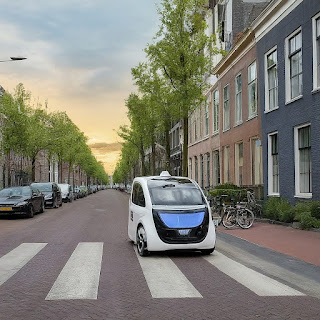City regions, made of multiple cities and towns are characterised by mutual influences, unavoidable impacts and necessary interdependencies.
For instance, when the housing demand in one city exceeds
supply of residential stock, nearby cities and towns start to feel the pressure
and real estate activities start to accelerate. When real estate prices start
to escalate in one city then businesses start to flee to other nearby cities
and neighbourhoods. When one large city feels infrastructure capacity
constraints, the nearby towns start to witness increasing investments in
infrastructure upgradation and augmentation to leverage and embrace growth they
are about to witness. When one city starts to experience frequent congestion,
it may also be a result of simultaneous development several miles away in
nearby satellite towns and neighbourhoods.
With city boundaries increasingly getting blurred on
functional parameters like mobility and housing; environmental parameters like
microclimate and pollution; economic parameter like commerce and trade; it
makes sense to have a renewed focus on concerted efforts at regional or cluster
level, in terms of shared vision formulation, spatial planning and development
framework preparation. In a regional, setting nearby satellite cities and
smaller towns are seen to have dyadic and complimentary relationship with
larger city and stimulus effect on neighbouring towns and neighbourhoods.
Acknowledging that the problems and opportunities of any
town is a resultant of regional dynamics, it is imperative that cities should
look beyond its physical administrative boundaries for resilient, timely and
appropriate answers i.e., at a city-region scale. City-regions shall benefit
from coordination and cooperation to achieve a critical magnitude to attract
national and international attention, actors, skillsets, investments and public
funding.
Based on the regional strengths, shared history, resource
characteristics such city-regions can formulate shared growth vision, thematic
identity (smart city region, specialized regional hub, heritage tourism
circuit, ecological zone etc.), prioritise investments, forge new partnerships
and devise new joint governance mechanism.
This case is especially relevant for the #Netherlands as
there are more than 40 such poised city municipality regions which may benefit
if they adopt a shared growth vision, create or revisit common unified
development framework for city-region.
Author: Anoop Jha
#smartcity #smartcityregion #smartregion #urbanplanning
#regionalplanning #networkgovernance #transportplanning #urbanmanagement
#urbandevelopement #technology #urbanplanning #exhibition #globalnorth
#Amsterdam #Utretch #Hague #alkmaar #noordholland #northholland #Eindhoven
#Rotterdam #Netherlands


.jpg)
.jpg)
.jpg)
.jpg)
.jpg)

.jpg)
.jpg)
.jpg)

.jpg)
.jpg)
.jpg)
.jpg)